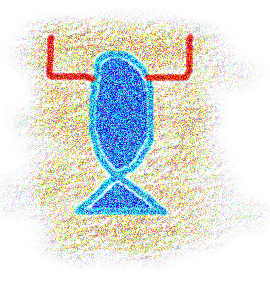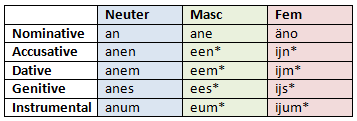New Pisces
| Spreec täropisceesum | |
|---|---|
| Pronounced: | [spɹek tɛəɹopiskesum] |
| Timeline and Universe: | Present, this universe |
| Species: | Human |
| Spoken: | People's Democratic Republic of New Pisces and Taurus |
| Total speakers: | 2 |
| Writing system: | Partridgo-Andersonic alphabet |
| Genealogy: | Indo-European Multi-Western |
| Typology | |
| Morphological type: | Inflecting |
| Morphosyntactic alignment: | Nominative-accusative |
| Basic word order: | V2 |
| Credits | |
| Creator: | S.C. Anderson, L.J. Partridge |
| Created: | 27 November 2007 |
The Tauro-Piscean language belongs to S.C. Anderson and L.J. Partridge, residents of the territories claimed by the New Pisces and Taurus micronation. Throughout its history, Piscean has belonged to several branches of the Indo-European language family, including Italic and West Germanic. Due to the awkward classification, a new pseudo-branch of Indo-European languages has been created by Anderson: 'Multi-Western', after the languages spoken in western Europe that have inspired Piscean. Tauro-Piscean is essentially the modern Piscean dialect, reformed and with some revived features from its history, and the newly developing - now ingested - language Taurusian. Since an agreement on 27 November 2007, Anderson (Piscean) and Partridge (Taurusian) have agreed to work on a joint language and now both moderate the Piscean Lexicon.
Sounds
Tauro-Piscean sounds are based mainly on those in the modern standard dialects of German and English.
For non-linguists or for casual browsing: Tauro-Piscean letters can be compared to English phonetically:
Types of consonants
Linguistically, Tauro-Piscean consonants can be arranged in a grid like this:
Nouns
Genders
The Piscean language includes three 'logical' grammatical genders. While in many languages, the genders do not often relate to physical properties of nouns, they do in Piscean; therefore, most nouns are neuter, while creatures of the male sex are masculine and creatures of female sex are feminine. If one refers to a creature, but does not wish to distinguish sex, the neuter gender can be used as a substitute. Observe the following examples:
- teet Sunne - the sun (no sex, so neuter)
- teet Mann - the person (no sex specified, so neuter)
- se Mann - the man (male, so masculine)
- seo Mann - the woman (female, so feminine)
The above example shows the importance the article plays in Piscean of distinguishing between sexes in a language where one noun fits all.
Articles
Definite articles
The word ‘the’ is known as the definite article.
The definite article is inflected in various ways, firstly split into three depending on grammatical gender, then into six depending also on quantity - whether singular or plural - and finally into a further thirty depending on grammatical case - whether nominative, accusative, dative, genitive or instrumental.
Those words highlighted with an asterisk follow irregular patterns. 'Enum' is a contraction arising from a rather complex - and now incorrect - 'teemenum'. 'Seäm' is a result of 'seoum', which is difficult for a Piscean speaker to pronounce. The O and U thus collapse into Ä. Similarly, 'som' is contrived, as 'säum' is awkward in speech, giving way instead to a collapse of Ä and U into O.
Indefinite articles
The word ‘a’ is known as the indefinite article.
The indefinite article is inflected in much the same way as the definite article, but lacking plural forms (which are shown not with an article, merely by inflecting the noun itself).
Those words highlighted with an asterisk follow irregular patterns. 'Een', 'eem', 'ees' and 'eum' are contracted forms of 'aneen', 'aneem', 'anees' and 'aneum', respectively. Regarding the feminine irregularities, 'änoen', 'änoem', 'änoes' and 'änoum' first contracted to 'oen', 'oem', 'oes' and 'oum', but - for even easier pronunciation - the O (and E, where applicable) finally collapsed into the dipthong IJ, which sounds like the English word 'eye'.


